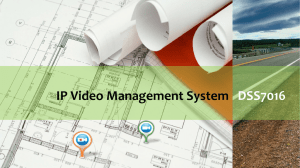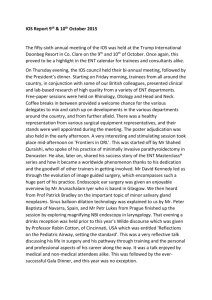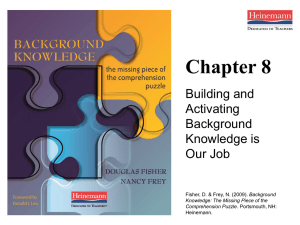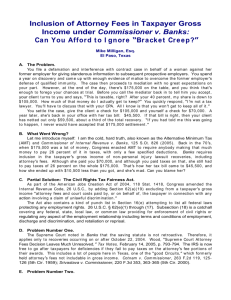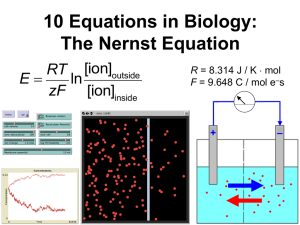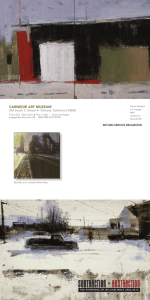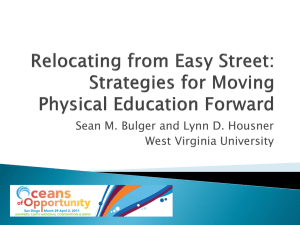Activating What Students Know: Teaching That
advertisement
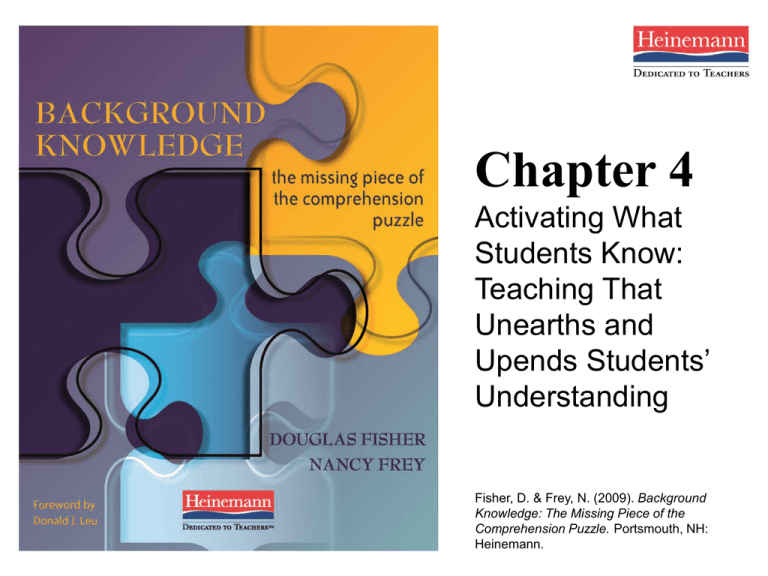
Chapter 4 Activating What Students Know: Teaching That Unearths and Upends Students’ Understanding Fisher, D. & Frey, N. (2009). Background Knowledge: The Missing Piece of the Comprehension Puzzle. Portsmouth, NH: Heinemann. Today’s Purposes • Learn about the role of establishing purpose in learning • Examine instructional methods for activating background knowledge in your classroom • Develop questions you can use in your instruction to activate background knowledge. Table Talk What are some of the purposes you have for reading? How does it influence the material you choose? Reading For Purpose • The purpose a person chooses when reading influences meaning and understanding. • When purpose is unclear, or is different from what the author has in mind, meaning can be lost. The House (Pickert & Anderson, 1977) The two boys ran until they came to the driveway. "See, I told you today was good for skipping school," said Mark. "Mom is never home on Thursday," he added. Tall hedges hid the house from the road so the pair strolled across the finely landscaped yard. "I never knew your place was so big," said Pete. "Yeah, but it's nicer now than it used to be since Dad had the new stone siding put on and added the fireplace." There were front and back doors and a side door which led to the garage, which was empty except for three parked 10speed bikes. They went in the side door, Mark explaining that it was always open in case his younger sisters got home earlier than their mother. Pete wanted to see the house so Mark started with the living room. It, like the rest of the downstairs, was newly painted. Mark turned on the stereo, the noise of which worried Pete. "Don't worry, the nearest house is a quarter of a mile away," Mark shouted. Pete felt more comfortable observing that no houses could be seen in any direction beyond the huge yard. The dining room, with all the china, silver, and cut glass, was no place to play, so the boys moved into the kitchen where they made sandwiches. Mark said they wouldn't go to the basement because it had been damp and musty ever since the new plumbing had been installed. "This is where my Dad keeps his famous paintings and his coin collection," Mark said as they peered into the den. Mark bragged that he could get spending money whenever he needed it since he'd discovered that his Dad kept a lot in the desk drawer. There were three upstairs bedrooms. Mark showed Pete his mother's closet, which was filled with furs and the locked box, which held her jewels. His sisters' room was uninteresting except for the color TV, which Mark carried to his room. Mark bragged that the bathroom in the hall was his since one had been added to his sisters' room for their use. The big highlight in his room, though, was a leak in the ceiling where the old roof had finally rotted. The Role of Establishing Purpose • Establishing purpose is key to activating background knowledge • Include: – Content: “We’ll be learning about how fear outweighed justice when JapaneseAmericans were sent to internment camps in World War II.” – Language: “What words would be seen and heard that would make people more fearful?” – Social: “You’ll be working in small groups to analyze newspaper headlines from the weeks after the attack on Pearl Harbor.” Variations of K-W-L (Ogle, 1986) • KWLH: How can I learn more? • KWL+: Adds mapping to the process • KWLHLS: How will I learn it? How will I share it? • KWLS: What do I still need to learn? • KWHHL: What are the head words? What are the heart words? Text Impressions • Make a list of key words from a passage students will be reading • Ask them to write their own passage using the terms in order • Great way to assess background knowledge, and it activates theirs Quickwrites • Brief written response to a question • Should be a thought-provoking question • Gives students a psychologically safe environment to speculate • Avoid questions that are too simplistic • Extend these quickwrite questions by inviting students to engage in structured partner discussions Type of Knowledge What It Is Example Declarative Facts, labels, names You might have heard the saying that “we only use 10% of our brains.” Summarize the evidence either for or against the claim. Procedural Application of information The human cerebrum is disproportionately large compared to other mammals. What advantage does this give to humans? Conditional Knowing when and why to apply information Hypothesize why it takes more energy for a nerve impulse to travel through an axon that lacks myelin as opposed to an axon that has myelin. Table Talk Consider a unit you will be teaching in your course, and develop three quickwrite questions that tap into declarative, procedural, and conditional knowledge. Share your quickwrite questions with your table. Checklists • Offer students a map for completing a task or solving a problem • Strengthens background knowledge by encouraging procedural knowledge • Gives teachers a means for assessing when thinking goes astray Ask yourself … Checklist for Writers [ ] P urpose: Have you define d t he purpose of your writ ing? Are you trying to ent ertain? Explain? Describe? Analyze? Define? P ersuade? Somet hingelse? Are t he cont ent and t one of yo ur piece appropriat e for your purpose? [ ] Audience: Have you identified yo ur int ended reader(s)? Have you t hough about t he cont ent of yo ur piece (examples, det ails, quoted mat erials) in t erms of how t he reader is likely t orespond? [ ] Cont ent : Have you reread eacharagraph p carefully, asking yourself, “ W hatelse does my reader needt o know here?” and “ Do I need to gat her more informat ion t o fill in cont ent gaps?” [ ] Organizat ion: Is t heorganizat ionof your piece as effect iveas possible? Do your examples build t o t he st rongest at t he end? W ould it be more effect iveto begin your piece wit h your conclusionfollowed by support ? Orwould it be more effect ivet o lead your readers hrough t t he st ory of your t hinking so t hey will reach t he conclusion t he same way you did? [ ] Int roduct ion:Is your int roduct ion engaging? Should you begin wit h a quotat ion?A descript ion? An anecdot e? A shocking det ail?met So hingelse? [ ] Conclusion: Does your conclusion do mor e t han simply repeat or summarizewhat you have already said? Does it leave t he reader with a fresh underst andingand/or somet hing moreot t hinkabout ? Rowlands, K. D. (2007). Check it out! Using checklists to support student learning. English Journal, 96, 61–66. Checklist in Math (Fay, 1965) S - Survey: Skim to get the main idea of the problem. Q - Question: Find the question that is asked in the problem. R - Reread: Read the problem and identify the information and details provided. Q - Question: Ask what operation needs to be performed (if necessary, see signal-word checklist for operations). C - Compute: Solve the problem mathematically. Q - Question: Ask yourself, “Does the answer make sense?” Sentence Frames Feature academic language in a cloze format to promote background knowledge •Cause/effect: –Because _____ occurred, the results – included _____. •Compare/contrast: –_____ and _____ share several characteristics –including ______. Paragraph Frames There is a lot of discussion about whether ______. The people who agree with this idea, such as _____, claim that ____. They also argue that _____. A further point they make is _____. However, there are also strong arguments against this point. _____ believes that _____. Another counterargument is _____. Furthermore, _____. After looking at the different points of view and the evidence for them, I think ____ because _____. David Wray, University of Warwick Assessing Your Practice Use the rubric to determine your goals for building Background knowledge in your classroom. How do teachers foster background knowledge across the school day? 5 Activating Background Knowledge Both unit and lesson purposes are established at the onset of ev ery lesson. Varied oral and written language tools are used throughout the lesson to cause activ ation 4 Unit and lesson purposes are established during most lessons. Varied oral and written language tools are used to activ ate BK, but primarily at the start of the lesson. 3 Unit and lesson purposes are posted on the board but are not discussed within the lesson. Oral or written language tools are occasionally used in some lessons. 2 Purpose of the lesson is posted but is not linked to larger unit purposes. Oral or written langue tools are used as icebreakers or warm-ups. 1 Purposes are behav ioral in nature and are not linked to larger unit concepts. Students have f ew opportunities to ref lect on what they know about a topic or concept. Building Your Own Background Knowledge • Watch Peter Elbow, who was written extensively about freewriting, discuss how it helps him write http://www.youtube.com/watch?v=YDUn1c4uxUE • Build your own background on nearly any topic at www.wikipedia.com. Take a look at the Discussion page of most entries to show your students how argumentation in writing occurs. • Get more paragraph frames at David Wray’s homepage: http://www.warwick.ac.uk/staff/D.J.Wray/Ideas/frames.html

